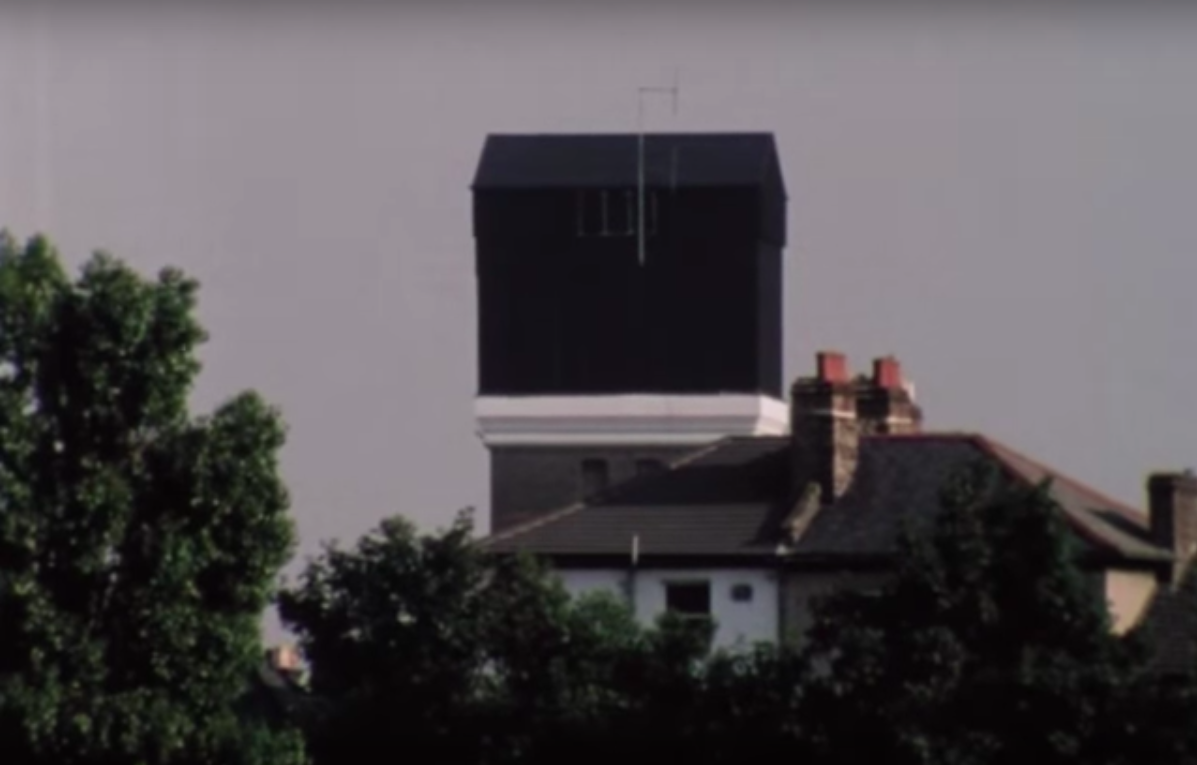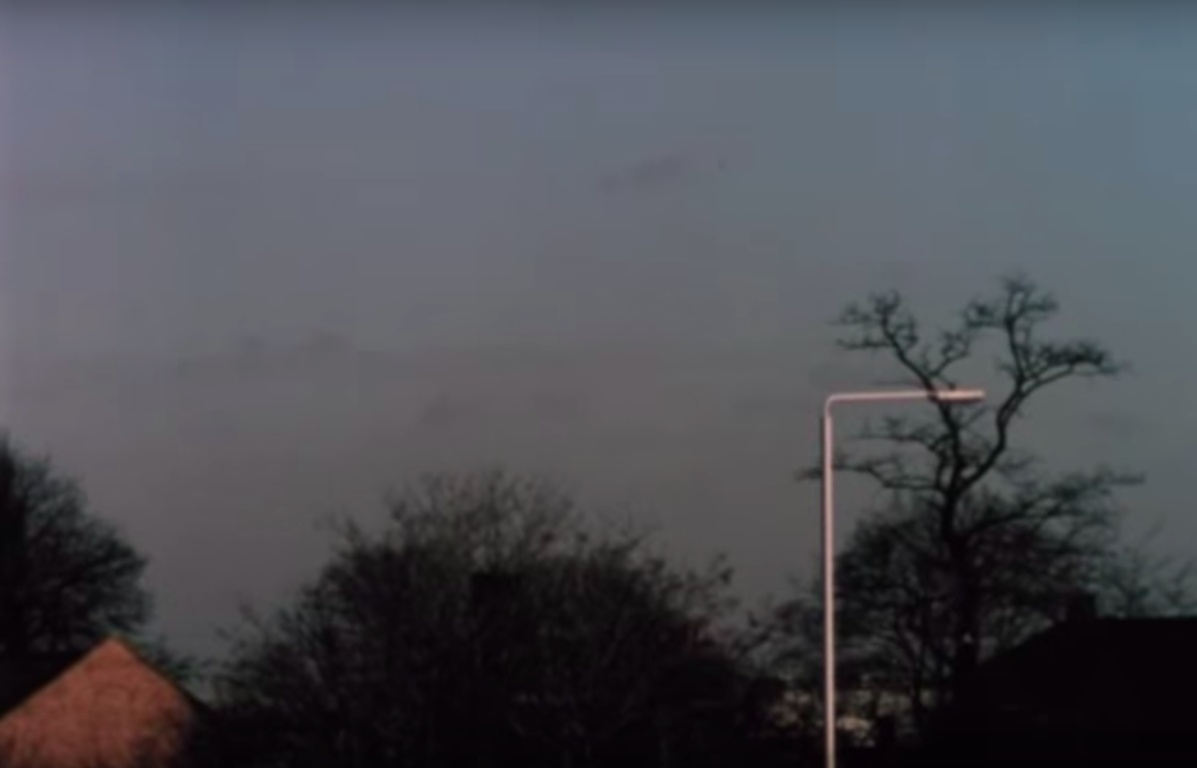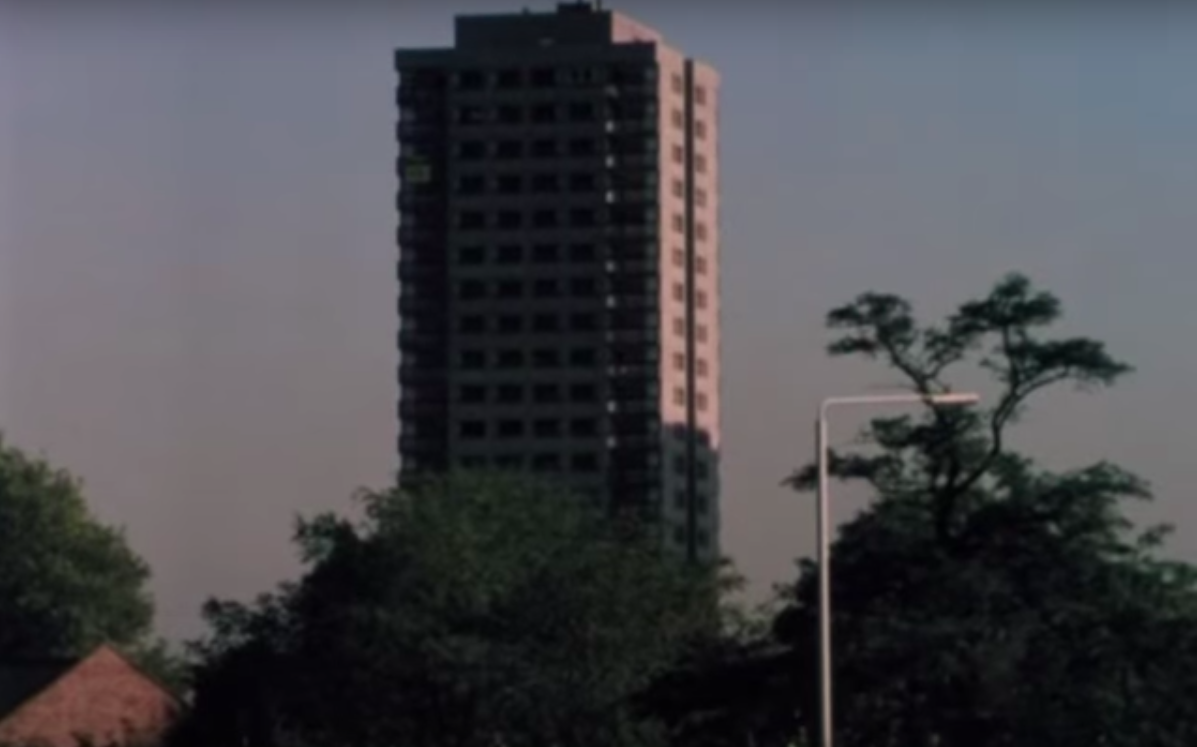John Smith’s The Black Tower (1987) is a confusing and haunting short film that combines qualities of structuralism and simplistic illusionism. Smith is renowned for his films and video installations, for which he was awarded numerous prizes at festivals: Hamlyn Foundation Award for Artists (2011) and Film London’s Jarman Award (2013). In comparison to other films, The Black Tower is the closest to being characterized as a straightforward narrative short, which has a distinct story told in chronological order. Viewers are expected to connect to the voice of the main character, whose face is never seen in the film. His storytelling is mundane and matter-of-fact, which adds to the realistic component that Smith intended.
The plot is extremely straightforward and is accompanied by static images and different camera effects and angles that, at first glance, have no cinematic value. The story told by the protagonist goes as follows. One day a man notices a tall tower not far away from his home. While he does not give it much attention in the beginning, the building ‘follows’ him around London, making the man more distressed and paranoid.

Despite all efforts to shelter himself from the ominous image of the tower, the protagonist still sees the dreaded image everywhere. At some point, the man is brought to a hospital, where he starts realizing that the tower is a mere play of his imagination. After returning to his normal life, the man tries to accept the vision that haunts him. One day, on his solitary walk along with London, the man sees the tower again and decides to enter it, knowing that it is not real. He opens the door and walks into the darkness, and dies. The main character’s voice is replaced with the voice of a woman who comes to visit the protagonist’s grave. When being in the cemetery, she looks up and sees the black tower (Figure 2).

The static images that viewers are shown are used for confirming the visions of the protagonist. For example, there is series of shots that show the tower from different angles and perspectives to transfer what the man seemed to see. Toward the end of the short, shots of the tower become more dreadful to see because viewers understand that it is not real while its images try to prove them wrong, thus playing on their gullibility (Beckett 2011). When watching the film, one tries to figure out how the tower was crafted in order to be shot from different locations. The real trick that Smith used was shooting the same tower from various angles and carefully framing the shots to “cover his tracks” (Beckett 2011, para. 2). The tricks that Smith employed in the short add to the ominous atmosphere since many of them are almost tedious to see, as in the example with the tower that is demolished. The director presents a sequence of shots that replace each other over and over: at first, viewers can see a static image of some trees and a blue sky (Figure 3), but then, a building appears in the same spot for less than a second (Figure 4). Seeing this for the first time, one may think that the building was not there altogether, which is a feeling that the protagonist also had.


Smith’s play with viewers’ gullibility can be even characterized as humorous, however paradoxical it may sound. The use of a predominantly primary colour palette in static shots is a nod toward simplicity and “accidental horror with constructivist tricks” (Selected Works, The Black Tower 2018, para. 4). While the imagery is detrimental to the film’s value, it is also important to discuss its sound component.
As mentioned previously, the tone of the main character’s voice is monotonous and somewhat dull, the purpose of which is to make sure that viewers adhere to the narrative and try imagining what the protagonist looks like. According to Sterne (2012), viewers’ imagination should be considered performative because it improvises within constraints given by an artist to create a new image. There is a blatant disentanglement of sound and image to show that the narration plays the key role in projecting meaning on the screen, thus creating moments for viewers’ self-awareness (Rogers & Barham 2017). This feature is common for many works of Smith, such as Home Suite, Regression, and Soft Work. All of them are shot with a hand-held camera combined with narration, commentary, and off-screen sounds, which constitute the added value for viewers (Chion 1994). The use of sound is regarded as non-retinal visual art that answers questions that the eye cannot answer (Kim-Cohen 2009). Thus, when viewers hear the sounds of heels stepping on concrete as the protagonist describes how he was running away from the haunting tower, there is no need to see the running since the ear answers all questions.
In conclusion, The Black Tower uniquely combines sound and static imagery to tell the story of architectural horror. Seeing repeating shots is somewhat dreadful to viewers while the protagonist’s reality and imagination mesh into one indistinguishable sequence. The fractured realism and the creeping terror of the short are reflected in the overall confusion: as the narrator loses his certainty about the ongoing events, viewers’ own certainty about what they see and hear is also challenged.
Reference List
Beckett, C 2011, Pragmatic illusionism: John Smith on DVD. Web.
Chion, M 1994, Audio-vision: sound on screen, Columbia University Press, New York, NY.
John Smith’s “Flag mountain/Black tower” at Tanya Leighton gallery, Berlin 2010, image. Web.
Kim-Cohen, S 2009, In the blink of an ear: toward a non-Cochlear sonic art, Continuum, New York, NY.
Rogers, H & Barham, J 2017, The music and sound of experimental film, Oxford University Press, New York, NY.
Selected works, The Black Tower 2018. Web.
Sterne, J (ed.) 2012, The sound studies reader, Routledge, New York, NY.